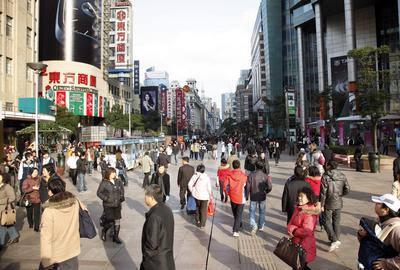Rebalancing global growth became the mantra for how to shape the contribution of emerging economies to ending the global recession, temporarily hiding the need to rein in structural deficits and financial imprudence in the developed world.
As Europe teeters toward another crisis, threatening to shatter confidence in America’s tentative recovery and global markets, the mood around the G20 summit has changed and emerging economies have come to be seen as the saviours of global economic growth, rather than the culprits of the current mess.
Europe is currently facing the second-round political effects of the strategies that have been painfully put in place to engineer economic recovery. Europe’s politicians were hamstrung by the difficulties in forging parliamentary majorities needed to pass measures designed to lift confidence and get the recovery on track. Now they are confronted with the difficulty of maintaining these majorities, as the blunt surgery used to root out the cancer that caused the crisis has left the body politic frail and resentful, weakening its resolve to stay on course. The prospect of governments who committed to the European-recovery strategies collapsing threatens the entire European recovery. As political turmoil compounds economic turmoil, it seems clear that restoring confidence will be a slow and painful process.
The leaders’ meeting in Los Cabos this week will not only need to maintain leaders’ resolve but also encourage new commitment to further measures to stimulate global growth.
As Kemal Dervis and Homi Kharas explain in this week’s lead, at no juncture has the G20 had a more critical task in bridging the gap between the national and the global political interests.
While there are worries about slowing global growth, China and other emerging economies have forged through the global financial crisis, maintaining strong rates of growth despite their export markets in industrial countries shrinking, and making a significant, positive contribution to global growth. The international community, and particularly policy makers in the United States, put great expectations on the contribution that China should make to global economic recovery by rebalancing its economy, reducing its current account surplus through promoting consumption growth. But there is growing evidence that this rebalancing is in fact happening.
Until recently, China’s current account surplus was seen as a big problem. The current account surplus has fallen from over 10 per cent of GDP in 2007 to 2.8 per cent of GDP in 2011. The IMF’s most recent prediction is that the current account balance is likely to remain at normal levels, with forecast surpluses of 2.3 per cent and 2.6 per cent in 2012 and 2013 respectively. In contrast, in September last year, the IMF was still forecasting a 5 per cent current account surplus this year and the IMF’s 2011 Article IV consultation with China identified the current account surplus as a problem that needed to be fixed.
Some argue that the declines in China’s external surpluses are in large part the result of a weak global economy and a modest appreciation of the renminbi, not a fundamental rebalancing. The underlying drivers of the surpluses that emerged during the boom years — negative real interest rates on deposits, cheap credit for corporations, and subsidised land and input prices — are all still in place. But the pressure through the market for policy change is powerful and the current consensus is that the external surpluses are unlikely to return once the global economy recovers.
Overall, the growth outlook for the big emerging economies of Asia remains strong: the latest IMF forecasts are that Chinese real GDP will grow 8.2 per cent this year, possibly easing back to the official 7.5 per cent over the next five years; Indian real GDP will grow 6.9 per cent though with a weaker outlook; and Indonesian real GDP will grow 6.1 per cent with a robust outlook.
For Indonesia and other emerging economies, the focus of policy needs to be on infrastructure investment to integrate these countries more efficiently and fully into the global economy and capture the benefits of integration. This need lies behind Indonesia’s push for a global initiative on infrastructure investment as part of the G20 framework.
Growth in Asia and in other emerging economies may not be sustainable on the pre-crisis growth model, and Asia is slowly but surely edging away from that model. But it certainly won’t be sustainable under any model unless the global rules and norms are strengthened and extended under the leadership of the G20. The opportunity to do this is here and by grasping it Asia and the emerging economies can help the global recovery and create a sounder basis for long-term growth.
Peter Drysdale is Editor of the East Asia Forum.

